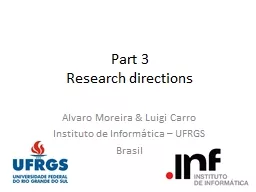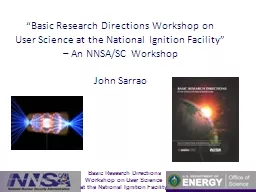PPT-Part 3 Research directions
Author : agentfor | Published Date : 2020-11-06
Alvaro Moreira amp Luigi Carro Instituto de Informática UFRGS Brasil 1 Outline Part III Work done at UFRGS on detectioncorrection of Control Flow Errors
Presentation Embed Code
Download Presentation
Download Presentation The PPT/PDF document "Part 3 Research directions" is the property of its rightful owner. Permission is granted to download and print the materials on this website for personal, non-commercial use only, and to display it on your personal computer provided you do not modify the materials and that you retain all copyright notices contained in the materials. By downloading content from our website, you accept the terms of this agreement.
Part 3 Research directions: Transcript
Download Rules Of Document
"Part 3 Research directions"The content belongs to its owner. You may download and print it for personal use, without modification, and keep all copyright notices. By downloading, you agree to these terms.
Related Documents














